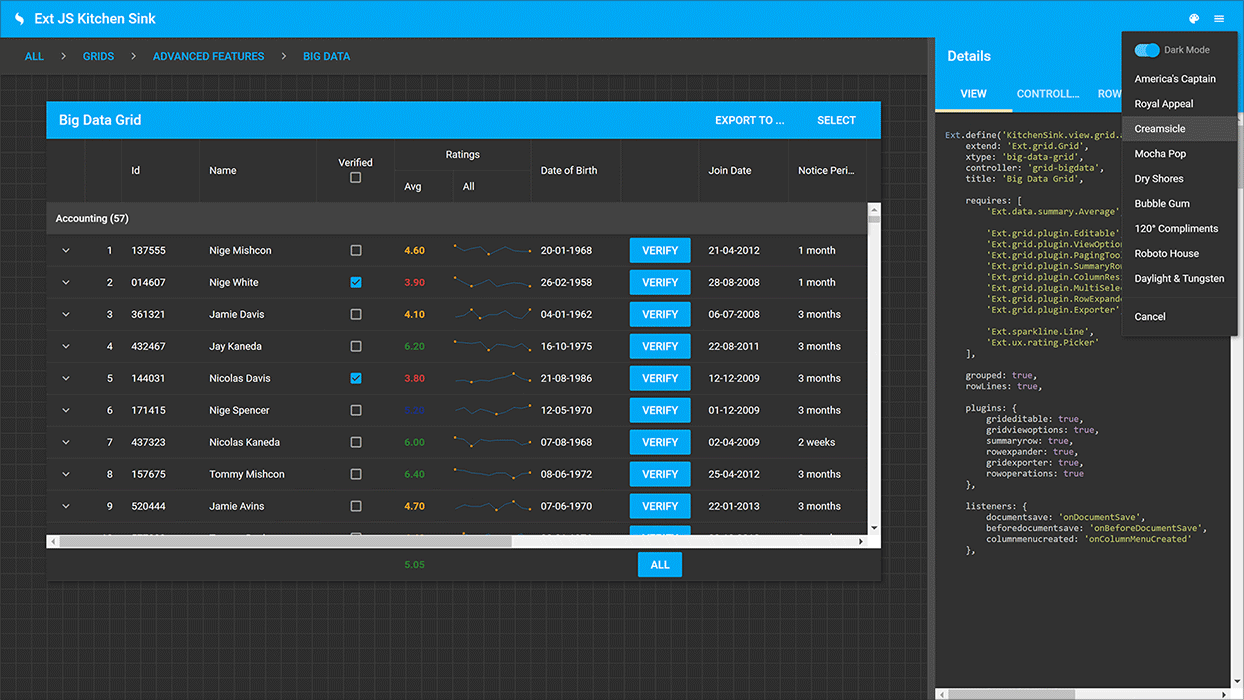6 Top JavaScript UI Frameworks & Libraries for 2020
This article was created in partnership with Sencha. Thank you for supporting the partners who make SitePoint possible.
JavaScript is the technology at the heart of today’s snappy and fast web apps. There are countless UI frameworks and libraries for building complex, reactive apps that scale well.
Some will help you write more efficient, maintainable code. Or you need help designing a set of consistent, interoperable, and fast UI components. In almost any situation, you can find an option that does much of the heavy lifting for you. There’s no need to start from scratch and reinvent the wheel.
The most popular JavaScript frameworks available present some common capabilities. In particular, they:
- can keep state and view synchronized
- offer routing functionality
- let developers build, reuse, and maintain user interface components that are efficient and fast to respond to user interaction.
The number of JS frameworks available is high and that number continues to grow. Take a look at these options. I’ve listed both stable, popular libraries and newer options for the curious.
Let’s jump in with a sleek, enterprise-level JavaScript framework — Ext JS by Sencha.
1. Ext JS by Sencha
Need to build a web app that handles large amounts of data, and need powerful, flexible front-end tools for displaying and working with it?
Sencha Ext JS is described as the…
most comprehensive JavaScript framework for building data-intensive, cross-platform web and mobile applications for any modern device. Ext JS includes 140+ pre-integrated and tested high-performance UI components.
Some of these components include:
- a HTML5 calendar
- grids
- trees
- lists
- forms
- menus
- toolbars
- and much more
Ext JS is a reliable, paid framework that comes with outstanding docs, tutorials, and support packages. Recent tests showed that the Ext JS data grid was 300x faster than leading competitors. In fact, its Virtual Scrolling experience retrieves and shows large quantities of data in under a second.
Advantages of Ext JS include:
- quick, smooth development. Enjoy seamless integration between an enterprise framework and state-of-the-art components and tools.
- comprehensive set of secure components. You’ll never have to go out of the framework to find any missing widget or functionality.
- great design capabilities due to included integrated tools. Sencha Architect offers drag and drop capabilities. Sencha Stencils lets developers mock up, style, prototype and test UI concepts.
- awesome unit and end-to-end testing tools with Sencha Test.
- a layout manager. Manage the display of data and content across different browsers and screen sizes. A responsive config system adapts the interface to device orientation and browser window sizes.
- easy to achieve accessibility compliance with the Ext JS ARIA package
- a robust data package that decouples the UI components from the data layer.
You can find out more about Ext JS on the framework’s site.
2. React
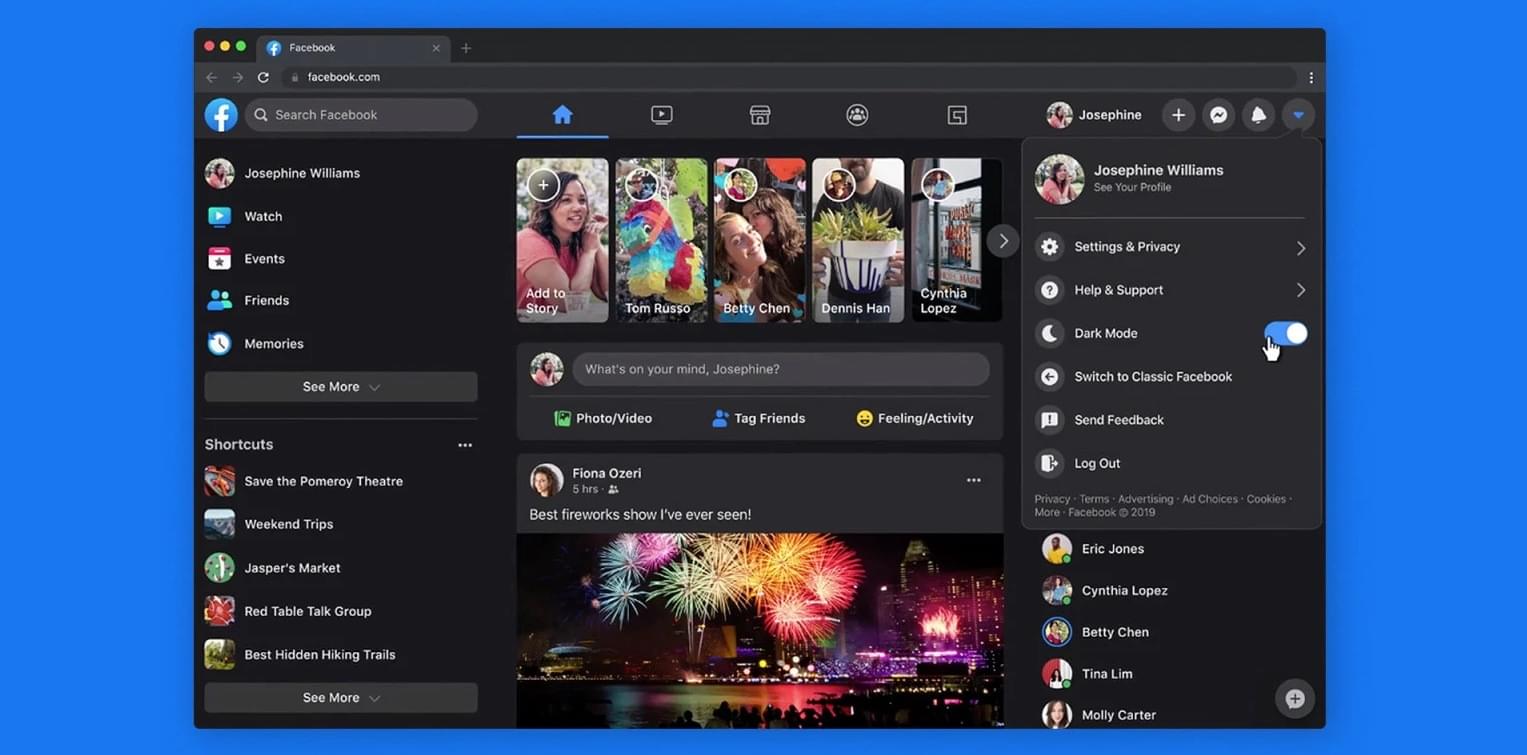
React is enormously popular among front-end developers. It’s an open-source JavaScript library for building blazingly fast, interactive UIs. React was first created by Jordan Walke, a software engineer working for Facebook. It was first deployed on Facebook’s newsfeed in 2011, and on Instagram in 2012. It’s used by the likes of Netflix, Airbnb, Instagram, and the New York Times, to name a few.
Reasons for choosing React to power your next project include:
- React is quick to learn and use. It’s JavaScript with a small API.
- code components are stable and reusable. They’re a breeze to create and maintain using the API’s declarative syntax.
- A big company and a strong community support React.
- The library is stack agnostic, can also render on the server using Node.js, and on mobile apps with React Native.
3. Angular
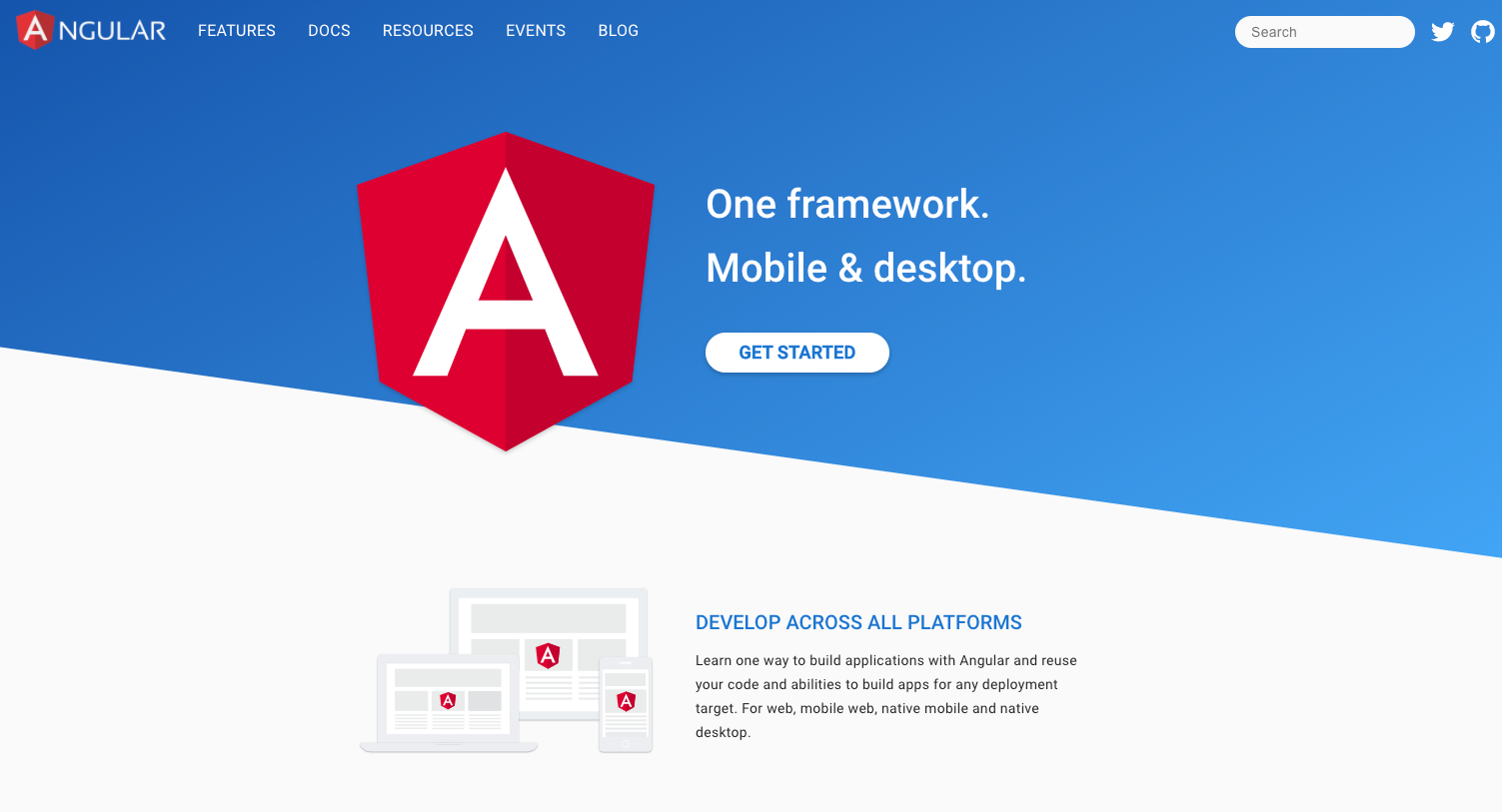
Angular is a free, open-source framework by Google that works for both desktop and mobile.
There’s a learning curve, including getting familiar with TypeScript, a superset of JavaScript. Despite that, Angular remains a great framework to work with. Here are some of the reasons for using it:
- cross-platform – progressive web apps, native mobile apps, and desktop
- offers speed and performance
- has great features like filters, two-way data binding, directives, and more
- makes available awesome tooling for faster development
- has full support from Google and a strong community of developers behind it.
For more details, don’t miss Angular Introduction: What It Is, and Why You Should Use It by Ilya Bodrov-Krukowski.
4. Vue
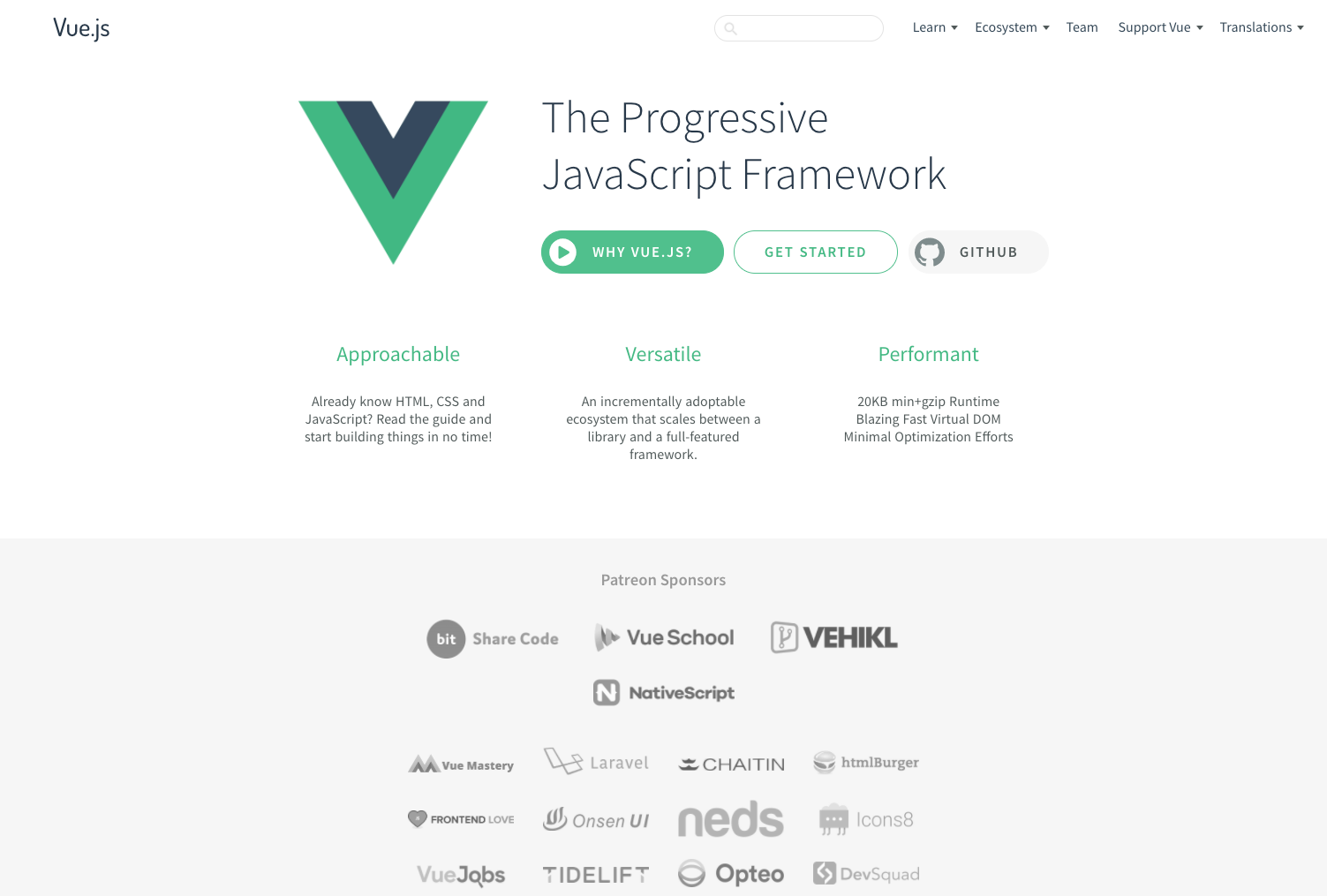
Vue JS is a free and open-source progressive JavaScript framework created by Evan You. It uses a template syntax (like Angular) and relies on a component-based architecture (like React).
Here’s how Vue describes itself in its own GitHub repository page:
Vue (pronounced
/vjuː/, like view) is a progressive framework for building user interfaces. It is designed from the ground up to be incrementally adoptable, and can easily scale between a library and a framework depending on different use cases. It consists of an approachable core library that focuses on the view layer only, and an ecosystem of supporting libraries that helps you tackle complexity in large Single-Page Applications.
Here are some of Vue’s strongest points:
- developer-friendly. If you know the languages of the web (HTML, CSS and JavaScript), the Vue docs are all you need to start building right away.
- you can integrate it within a project progressively. It easily scales from a library to a full-fledged framework.
- small and comes with a super-fast virtual DOM.
- has an amazing community behind it, which makes it a stable framework to adopt.
- offers great documentation.
If you’d like to delve deeper, read How to Tell If Vue.js Is the Right Framework for Your Next Project by Karolina Gawron.
5. Ember

Released in December 2011 by Yehuda Katz and Tom Dale, Ember is:
A framework for ambitious web developers.
Ember.js is a productive, battle-tested JavaScript framework for building modern web applications. It includes everything you need to build rich UIs that work on any device.
This JavaScript framework is free, open-source, and has a strong community behind it. Here are some of the reasons why Ember is successful among developers:
- leverages the convention over configuration approach championed by David Heinemeier Hansson. It aims to lower the number of decisions that a developer has to make (without sacrificing flexibility).
- almost all you need to set up your app comes with Ember out of the box.
- backwards-compatible.
- quick to adopt the latest web standards and JavaScript features.
- offers great docs and resources.
6. Svelte 3
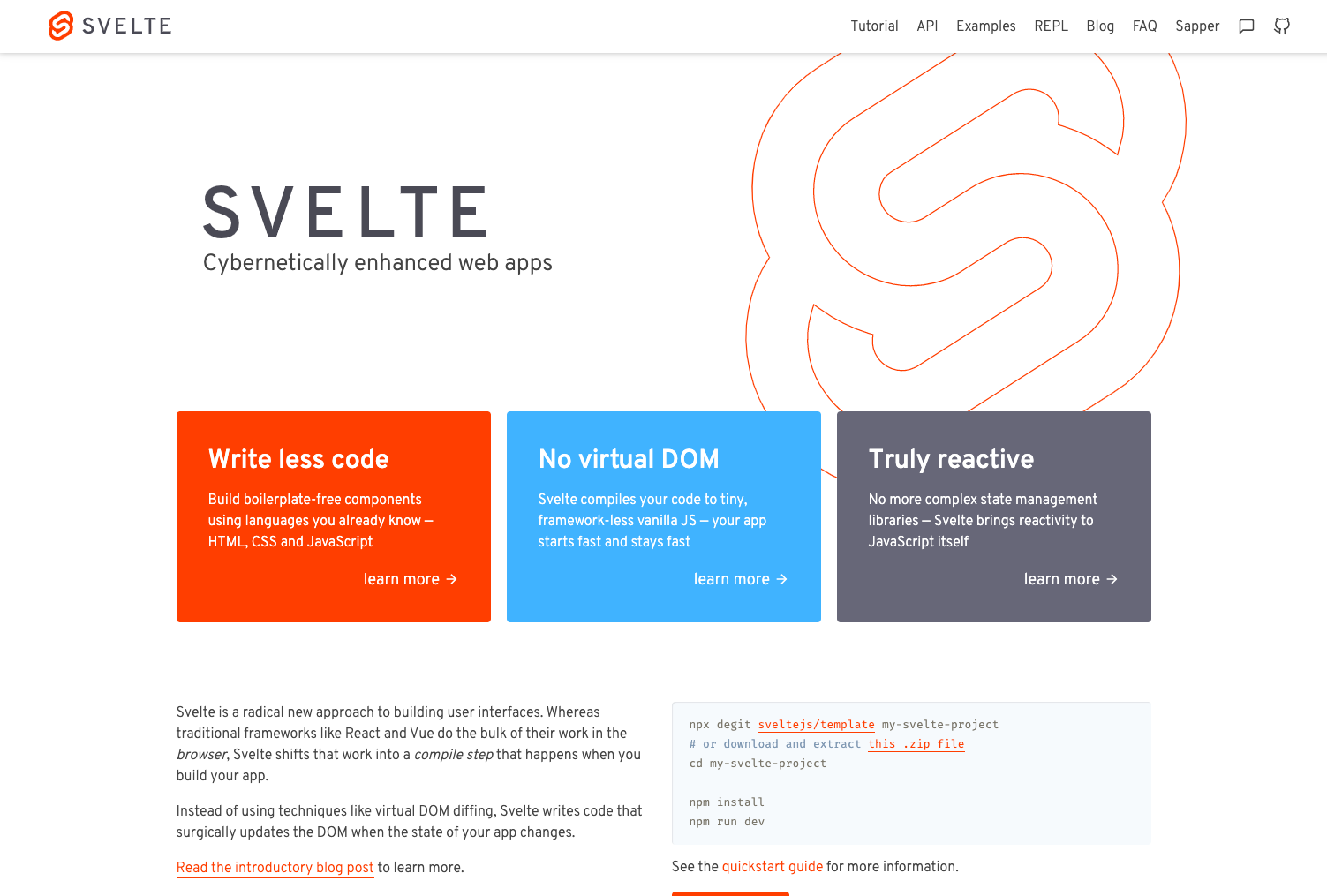
Though it’s growing up quickly, Svelte 3 is the new kid on the frameworks block. Rich Harris released Svelte in November 2016 as an open-source project. Version 3 came out in April 2019 and was a complete overhaul.
Svelte works differently from most frameworks listed so far. In particular:
Whereas traditional frameworks like React and Vue do the bulk of their work in the browser, Svelte shifts that work into a compile step that happens when you build your app.
Many frameworks use using techniques like virtual DOM diffing. Instead, Svelte surgically updates the DOM when the state of your app changes. Compiling code creates noticeable performance benefits.
Svelte is quick for beginners to get started with. You can build components without lots of boilerplate code. Just use HTML, CSS, and JavaScript. The Svelte site features beginner-friendly resources. These include a tutorial, examples, and a detailed API for more seasoned Svelte devs. For help and support, you’re invited to join the dedicated Discord server.
Conclusion
Choosing a framework is always a circumstancial decision. It involves paying attention to what your specific project’s challenges are. It also means considering your team’s experience and preferences.
For example, if your team needs to build data-intensive, enterprise-level projects that need a secure, reliable, and comprehensive framework with a large set of components that work well with each other, Ext JS by Sencha is a great option. You’ll never have to go out of the framework to search for components. For projects that start small but need flexibility and scaling capabilities, Vue could work well. And if your front-end team has extensive React expertise, going with React could be your best bet.
Do you have any other JS UI frameworks or library you’d like to suggest? Which ones have you found yourself using the most as a developer? Let us know on Twitter.

